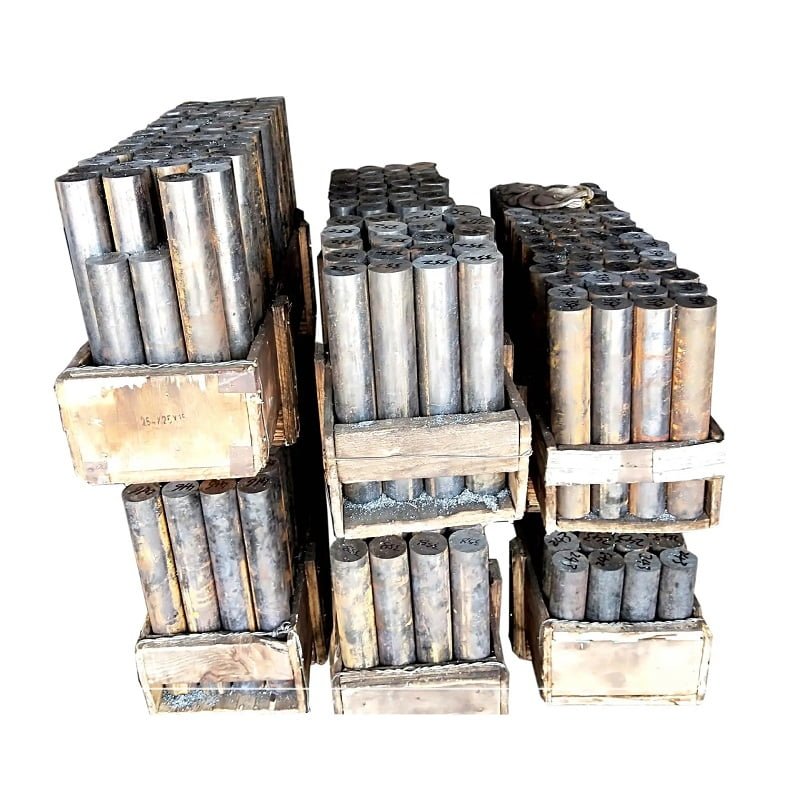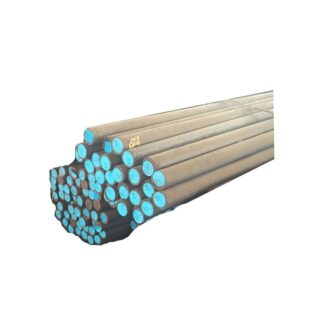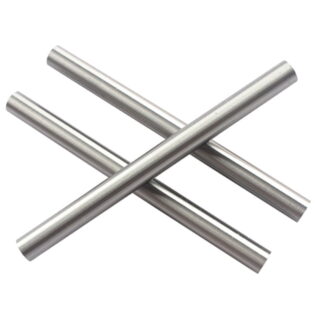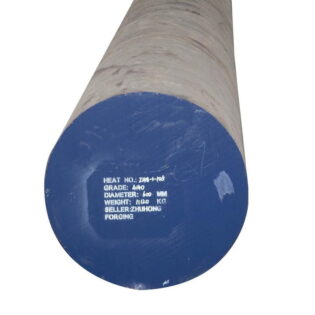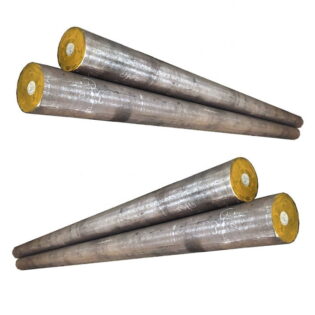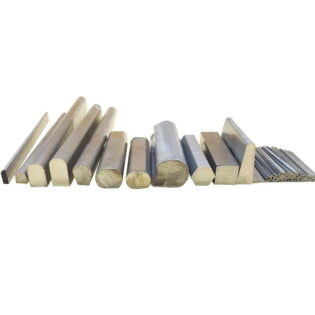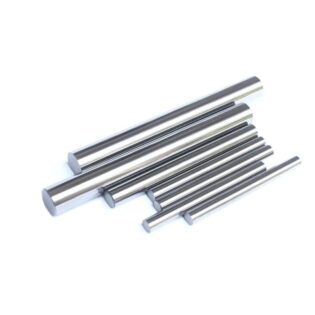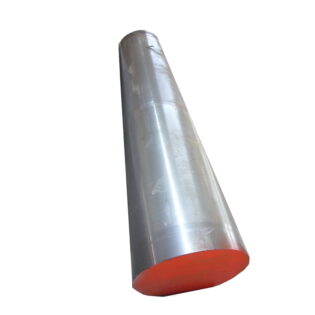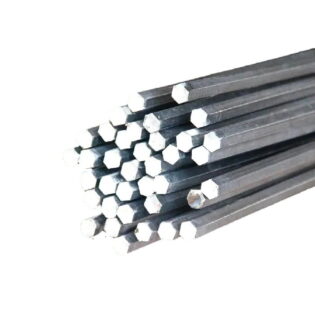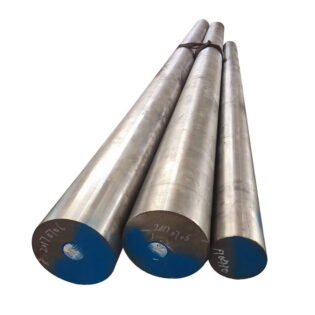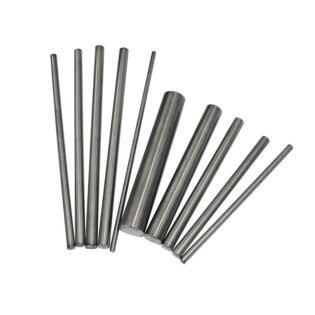100Cr6 Description:
100Cr6 bearing steel good overall performance, quenching and tempering, high hardness and uniform, good wear resistance, high contact fatigue strength. Good hot workability of steel, ball machined after a good machinability. 100Cr6 is a through hardening bearing steels intended for rolling contact and other high fatigue applications. In the hardened condition the high hardness, high strength and high cleanliness provides the steel with the right properties to withstand high cycle, high stress fatigue. 100Cr6 is mainly used for small and medium sized bearing components. It is also regularly used for other machine components that require high tensile strength and high hardness. The hardenability approximately corresponds to a ring with max. 17 mm wall thickness.
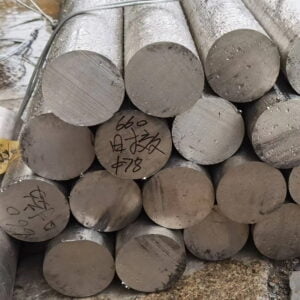
100Cr6 bearing steel good overall performance, quenching and tempering, high hardness and uniform, good wear resistance, high contact fatigue strength. Good hot workability of steel, ball machined after a good machinability. 100Cr6 is a through hardening bearing steels intended for rolling contact and other high fatigue applications. In the hardened condition the high hardness, high strength and high cleanliness provides the steel with the right properties to withstand high cycle, high stress fatigue. 100Cr6 is mainly used for small and medium sized bearing components. It is also regularly used for other machine components that require high tensile strength and high hardness. The hardenability approximately corresponds to a ring with max. 17 mm wall thickness.
The steel carbides evenly distributed carbide is not easy precipitation, and easy to eliminate normalizing, can be eliminated by normalizing the mesh and the coarse carbide structure. However, the compressive strength and wear resistance of the lack of workability. When the surface of the steel has a residual decarburized layer with a carbon content of 0.6% to 0.7%, the superheat sensitivity of the surface layer increases due to the reduction of carbides. After the normal heating quenching the surface hardness can still reach 60-62HRC, but the bending strength has dropped 40% -50%. Surface grain size reached 7, the heart of 10.
The steel forging performance is good, due to easy decarburization, the need to heat in a neutral atmosphere or protective atmosphere furnace. Exert forging heat quenching and tempering, you can get fine tempered sorbite, simplify the process, saving time and energy saving, both good cutting performance, but also the ideal heat treatment organizations.
The steel softening temperature is 320 ℃, hardenability better than chromium steel, oil hardening hardened depth of 40-50mm. The steel zero quenching and tempering toughening process can eliminate rubbing = board due to conventional quenching and oxidation of decarburization caused by early failure, uneven austenite repair or can be refined martensite, rubbing fire after the cryptocrystalline martensite Or fine needle-like martensite, this organization good toughness.
100Cr6 Chemical Composition:
| C | Si | Mn | P | S | Cr | Mo | Cu | O | Al |
|---|---|---|---|---|---|---|---|---|---|
| 0.93-1.05 | 0.15-0.35 | 0.25-0.45 | ≤0.025 | ≤0.015 | 1.35-1.60 | ≤0.10 | ≤0.30 | ≤0.0015 | ≤0.050 |
100Cr6 Mechanical Properties:
| Tensile Strength (MPa) | Yield Strength (MPa), ≥ | Elongation (%, ≥) |
|---|---|---|
| 1080-1470 | 835 | 9 |
100Cr6 Material Brinell Hardness:
- ≤207 HBW (Annealed to achieve spheroidized carbides);
- ≤241 HBW (Annealed to achieve spheroidized carbides and cold worked)
100Cr6 Physical Properties:
| Density (g/cm3) | 7,8 |
|---|---|
| Specific heat capacity in J/(Kg·K) | 460 at 20℃ |
| Electrical resistance (μΩ·m) | 0.19 (20℃) |
| Modulus of elasticity (GPa) | 210 |
| Thermal conductivity in W/(m·K) | 33,0 (20 ℃) |
| 32,2 (350 ℃) | |
| 31,4 (700 ℃) | |
| Thermal expansion coefficient (10-6/K) | 12,3 (20-100℃) |
| 13,4 (20-200℃) | |
| 13,8 (20-300℃) | |
| 14,1 (20-400℃) |
Equivalent Grade:
| European Union | ISO | US | Japan | China | |||||
|---|---|---|---|---|---|---|---|---|---|
| Standard | Grade (Steel number) | Standard | Grade (Steel number) | Standard | Grade | Standard | Grade | Standard | Grade |
| EN ISO 683-17 | 100Cr6 (1.3505) | ISO 683-17 | 100Cr6 (1.3505) | AISI SAE, ASTM A295/A295M | 52100 | JIS G 4805 | SUJ2 | GB/T 18254 | GCr15 |
Heat Treatment:
- Hardening temperature: 830-870 ℃, quenching media: oil.
- Tempering temperature: 150-180 ℃.
Application:
It is suitable to make various bearing rings with wall thickness ≤12mm, outer diameter ≤250mm, steel ball diameter ≤50mm, cone and spherical roller diameter ≤22mm, and needle rollers of all sizes; it can also be used to manufacture measuring tools, molds, and woodworking tools. Manufacturing internal combustion engines. Steel balls, rollers and bushings on drive shafts of electric locomotives, machine tools, tractors, steel rolling equipment, drilling machines, railway vehicles, and mining machinery.
